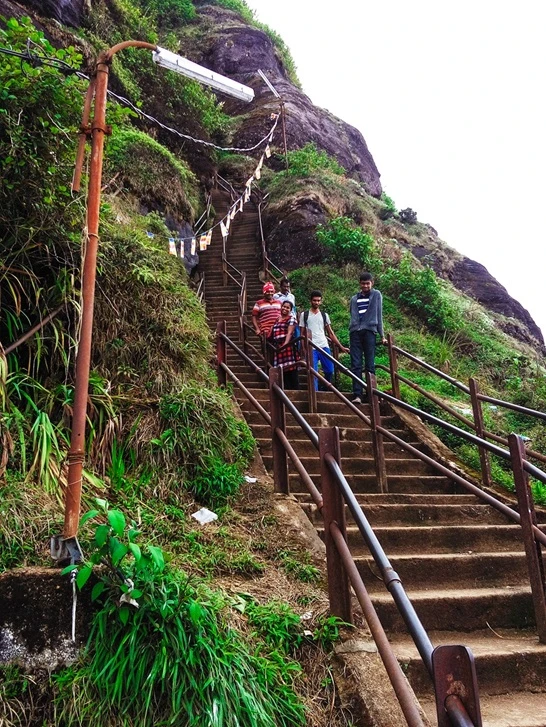Adam's Peak, also known as Sri Pada, is a prominent mountain in Sri Lanka, located in the central part of the country. It is renowned for its significance in various religions and is a popular pilgrimage site. Here are some key aspects of Adam's Peak:
- Geography and Location: Adam's Peak is situated in the central highlands of Sri Lanka, near the town of Nallathanniya. It is part of the Peak Wilderness Sanctuary, which is a protected area. The summit stands at an elevation of 2,243 meters (7,359 feet) above sea level.
- Religious Significance: The mountain is considered sacred by multiple religions, including Buddhism, Hinduism, Christianity, and Islam. Each religion has its own beliefs and legends associated with the peak.
- Buddhism: Buddhists believe that the footprint at the summit is that of Lord Buddha, and the peak is called Sri Pada, meaning "sacred footprint."
- Hinduism: Hindus believe the footprint belongs to Lord Shiva.
- Christianity and Islam: According to Christian and Islamic traditions, the footprint is believed to be that of Adam, the first man.
- Pilgrimage Season: The pilgrimage season to Adam's Peak typically begins in December and continues until May. Pilgrims climb the mountain during the night to reach the summit before sunrise, a time when they believe the divine footprint is best viewed.
- The Sacred Footprint: At the summit, there is a rock formation that is said to resemble a footprint. Pilgrims believe that this is the footprint of the revered figure associated with their respective faiths.
- Cultural and Natural Heritage: The area around Adam's Peak is rich in biodiversity, and the Peak Wilderness Sanctuary is home to a variety of flora and fauna. The climb to the summit provides stunning views of the surrounding landscape.
- The Climb: The traditional pilgrimage route is a steep ascent with thousands of steps leading to the summit. There are different routes to the top, each with its own attractions, and the climb is considered both a religious and physical challenge.
- Tourism: In addition to pilgrims, Adam's Peak attracts tourists interested in experiencing the cultural and natural heritage of the region. The journey to the top is not only a religious pilgrimage but also a trekking adventure.
Adam's Peak is a significant cultural and religious landmark in Sri Lanka, drawing people from various walks of life to experience its spiritual and natural allure.
There are several routes to reach the summit of Adam's Peak, each offering a unique experience and different attractions along the way. The choice of route may depend on factors such as personal preference, fitness level, and the specific cultural or natural features one wishes to explore. Here are some of the main routes:
- Hatton-Nallathanniya Route (Most Common):
- This is the most popular and frequently used route.
- The journey typically starts from the town of Hatton, and the climb to the summit begins in the village of Nallathanniya.
- This route is characterized by a well-maintained staircase with about 5,200 steps leading to the summit.
- Along the way, you'll encounter rest stops, tea stalls, and viewpoints.
- Ratnapura-Palabaddala Route:
- This route starts from the town of Ratnapura and goes through Palabaddala.
- It is less crowded than the Hatton-Nallathanniya route and is known for its natural beauty.
- The climb involves both steps and a trail through the forest.
- Kuruwita-Erathna Route:
- This route begins in the town of Kuruwita and goes through Erathna.
- It is a less-traveled route compared to the Hatton-Nallathanniya route.
- The journey involves trekking through a forested area and is considered more challenging.
- Malimboda Route:
- This is another less crowded route, starting from the village of Malimboda.
- It is known for its scenic beauty and offers a quieter alternative to the more popular routes.
- Palabathgala Route:
- This route starts from Palabathgala, near Uda Maliboda.
- It is a less common route, and the climb involves a combination of steps and a trail.
Each route has its own charm and may appeal to different types of climbers. The choice of route can also depend on the starting point that is most convenient for your journey. It's advisable to check the current conditions of the routes and get local advice before starting the climb, especially if you're not familiar with the area. Additionally, during the pilgrimage season, some routes may have more facilities and services available than others.

